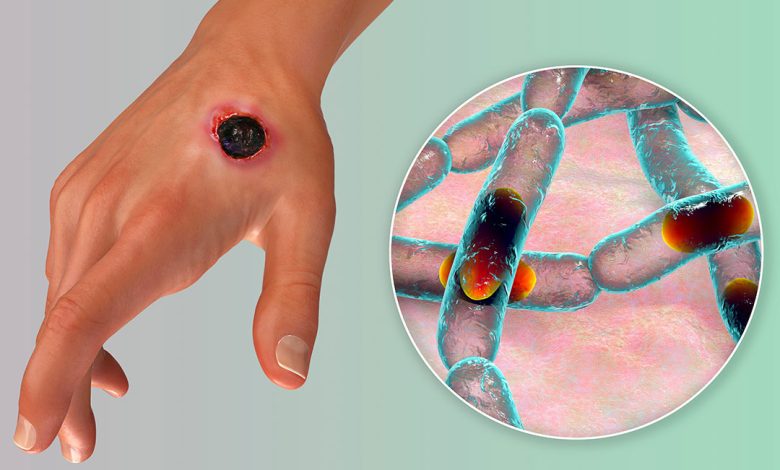Anthrax Symptoms, Causes, Diagnosis and Treatment

What is anthrax?
It is a rare, yet an acute disease which is triggered by Bacillus anthracis, a bacterium. The disease chiefly affects the wild game and livestock. Sick animals serve as the basis to infect us by means of direct or indirect contact.
Even though, there are no proves stating that anthrax spreads from one person to another, however possibilities are, that skin lesions of anthrax can be contagious.
Normally, an open skin wound allows the bacteria of anthrax to enter our body easily. However, inhaling spores and consuming contaminated meat can also get you infected.
What are the causes and symptoms of anthrax?
Specifically, anthrax infection enters your body from 4 common ways; all tend to cause different symptoms.
- Cutaneous anthrax:
It enters the body by means of a cut or wound on the skin. Symptoms include an itchy raised bump that may look like an insect bite. The bump will quickly turn into a sore which hardly causes pain though causes swelling. It has a black center.
- Gastrointestinal anthrax:
Clearly, this form starts by consuming undercooked meat of a sick animal. Symptoms include:
- Fever.
- Appetite loss.
- Headache.
- Vomiting.
- Nausea.
- Blood diarrhea.
- Swollen neck.
- Sore throat that causes swallowing difficulties.
- Inhalation anthrax:
Anthrax bacteria which is naturally found in the soil, forms anthrax spores. For years, these spores tend to stay dormant until finding a way into its host such as domestic or wild livestock, for example goats, horses, cattle and sheep. Inhaling in the anthrax spores can develop this form of disease. Clearly, it is the most dangerous way contacting anthrax; on the other hand, it’s often incurable. Initial symptoms include:
- Chest discomfort.
- Symptoms mimicking flu, for example mild fever, sore throat, muscle aches and fatigue.
- Nausea.
- Breathe shortness.
- Swallowing difficulties.
- Blood coughing.
With the progression of disease, you can experience:
- Trouble breathing.
- High fever.
- Shock.
- Lastly, Meningitis, acute inflammation of spinal cord and brain.
- Injection anthrax: injecting few illegal drugs can contract this form of anthrax. Initial symptoms are:
- Redness at the injected area.
- Extreme swelling.
While it progresses, you can experience:
- Meningitis.
- Multiple organ failure.
- Shock.
What are the complications of anthrax?
A life-threatening complication that anthrax can lead is the inflammation of spinal cord, fluid that cover your brain and membranes. Such may cause massive bleeding and death.
How is anthrax diagnosed?
Few tests your doctor can suggest in order to diagnose anthrax include:
- Blood tests.
- CT scan of the chest or X-ray.
- Skin testing.
- Stool testing.
- Spinal tap.
How is anthrax treated?
Specifically, a standard anthrax treatment includes an antibiotic course of 60 days such as doxycycline or ciprofloxacin. However, what antibiotic or antibiotic’s combination is effective in your case depends upon your age, overall heath, how you get infected, etc.
Moreover, antitoxin therapies help removing toxins that are caused by infection.
By : Natural Health News




